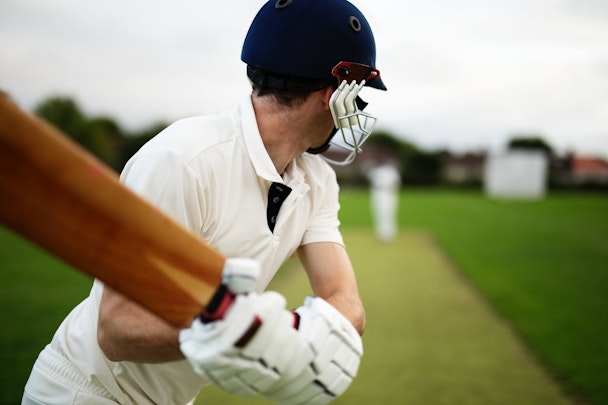Why the Cricket World Cup is a commercial champion
Cricket isn’t traditionally associated with slick marketing campaigns and major brands, in the same way as football or rugby. But the sport’s rapid commercialisation is changing that, as the interest generated by the 2019 International Cricket Council (ICC) Men’s Cricket World Cup proves.

Why the Cricket World Cup is a commercial champion
This year’s tournament is set to generate £400 million for the ICC in broadcasting rights alone, up from just £11 million back in 1996. It marks the beginning of a five-year global sponsorship deal between Coca Cola and the ICC and has also attracted sponsorship from big names such as Hublot, Nissan, Oppo, Emirates, Bira 91 and Uber.
There are a number of key trends making this year’s event particularly attractive to advertisers across APAC, cricket’s most important commercial market. These include highly engaged TV audiences, a rise in premium video streaming, and increased interest from younger fans inspired by social media and smartphone use.
Engaged audiences enjoy immersive TV experience
Linear TV is the leading source of entertainment across APAC and accounts for the majority of sports viewing. Live television is an ideal way to experience major sporting events as viewers can enjoy the action as it unfolds, immersing themselves in the big screen and sharing the event with friends or family.
The Cricket World Cup is being broadcast live to over 200 territories, via 25 partners including Star Sports, Ten Sports, PTV, SLRC, Fox Network Group, Digicel and Yupp TV. Host-nation broadcaster Sky Sports has dedicated an entire channel to the competition and many others are creating additional content to complement the actual matches. World Cup fixtures attract massive TV audiences, especially when the big hitters are involved, and the recent match between India and Pakistan attracted over 500 million TV viewers globally.
Widespread exposure and vast audiences inevitably make the Cricket World Cup commercially attractive, with advertisers keen to associate their brands with the sport and its characters. And they’re willing to pay over the odds, with Star Sports reportedly selling ad inventory at Rs 25 lakh per 10 seconds during the India-Pakistan game, far above the maximum Rs 15 lakh paid for other high-profile sporting events. World Cup coverage on linear TV is a massive opportunity for advertisers to reach both local and global audiences when they are absorbed in exciting, immersive premium sports content.
Premium video streaming puts viewers in control
Alongside linear TV, premium video streaming on connected TVs, as well as laptops or mobile devices is an increasingly popular way for cricket fans to keep up throughout the tournament. Whether they are streaming matches live or catching up on highlights clips after the event, premium video gives viewers the opportunity to engage with the World Cup on their own terms.
A number of digital partners are authorised to share video coverage and clips of the event, including ESPNcricinfo, Cricingif, Bongo, and Cricket Gateway. Across India and the Indian subcontinent, around 300 million people can access multiple-language coverage via Star Sports’ Hotstar digital streaming service, and it is expected up to 25% of Star Sport’s total tournament viewership will come from this platform. When digital video viewers are added to the 500 million that watched the India-Pakistan match, total viewership may well exceed one billion, making it the most watched cricket match in history.
Premium video streaming is providing another avenue for advertisers to engage cricket fans, perhaps reaching those who wouldn’t typically watch linear TV. Premium video delivers addressable inventory that enables advertisers to target their messaging to specific audience segments. It opens up possibilities for localised advertising and for brands that want to capitalise on World Cup fever but may not have the means for a major TV campaign.
Social media and smartphones drive interest
This year interest in the Cricket World Cup is being driven not just by broadcast TV and video streaming, but also by social media platforms, accessed predominantly via smartphones. Smartphones are overtaking feature phones as the dominant mobile device and are most often used by younger generations – the group most likely to move away from traditional TV towards other platforms and devices.
The World Cup is being covered across a variety of social platforms such as YouTube, Twitter and Instagram, where it has its own IGTV page including match previews, player challenges and fan interviews. Once again the India-Pakistan game broke records, this time on Twitter, generating 2.9 million tweets, which made it the most tweeted one-day international ever. As well as official event hashtags such as #CWC19 there are also team-specific hashtags in use such as #RiseOfTheTigers for Bangladesh or #TeamIndia for India, which make the relevant team jersey emoji appear when used. Social media advertising enables brands to reach audiences who may not otherwise be exposed to the Cricket World Cup. It is also a way of generating interest back across more traditional channels – taking advantage of second screening, where the audience watches on TV while connecting with other fans or accessing additional content on social channels.
As the final in July draws closer, brands are taking maximum advantage of the opportunities the Cricket World Cup offers to reach viewers across all channels and devices. As well as investing in traditional TV campaigns, which still offer an immediate, immersive experience, they are also exploring opportunities in premium video advertising and social media marketing. As these channels converge, they will enable massive reach and data-driven targeting across multiple demographics and devices, allowing the Cricket World Cup to really become a commercial champion.
Thomas Bremond is general manager, International at FreeWheel.
